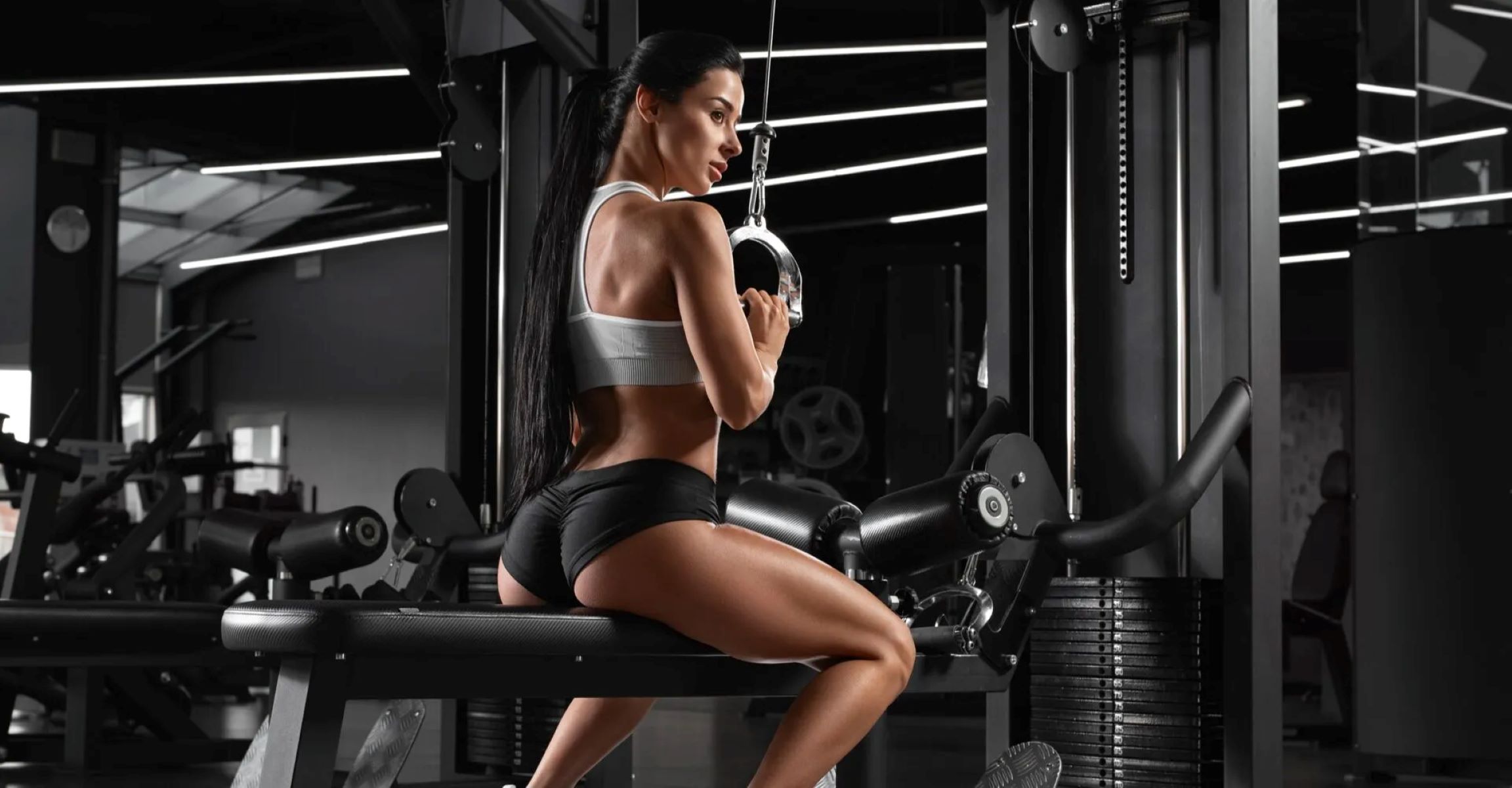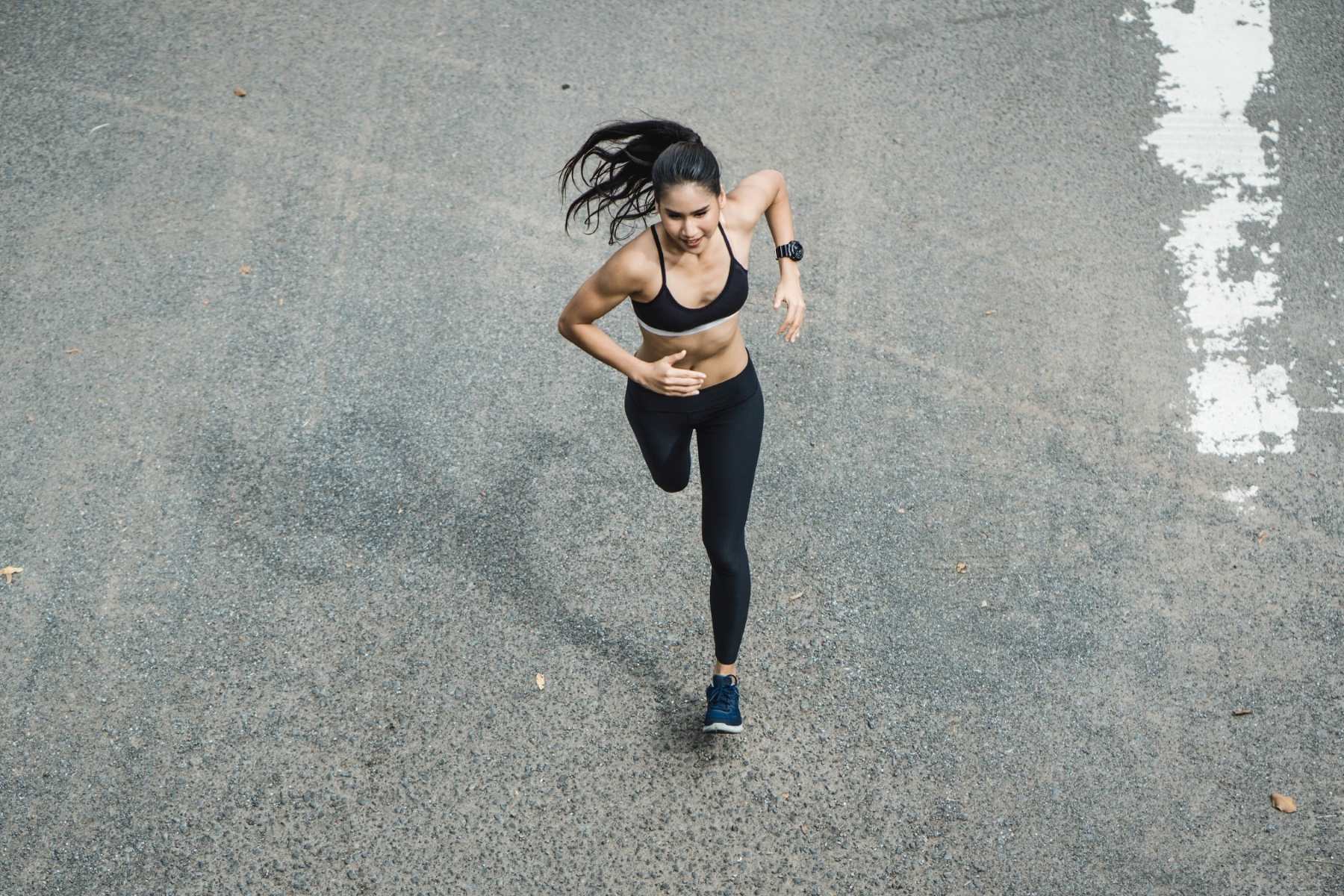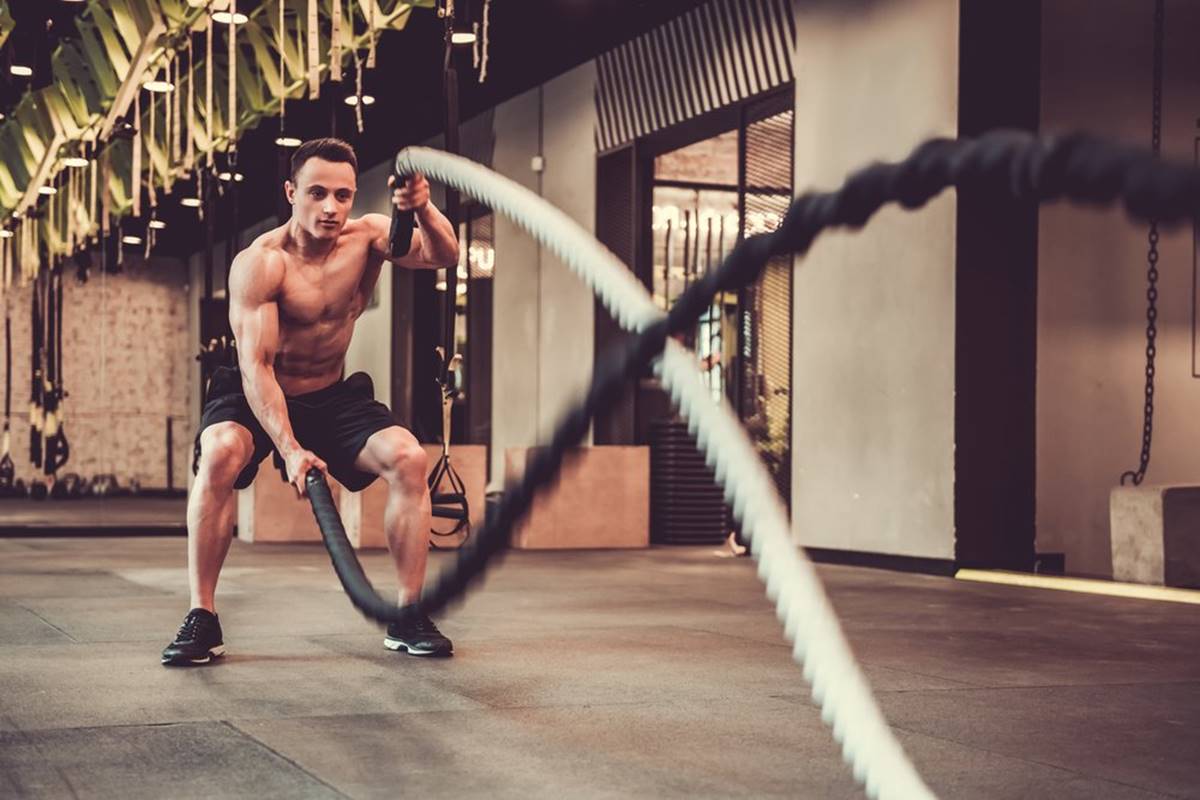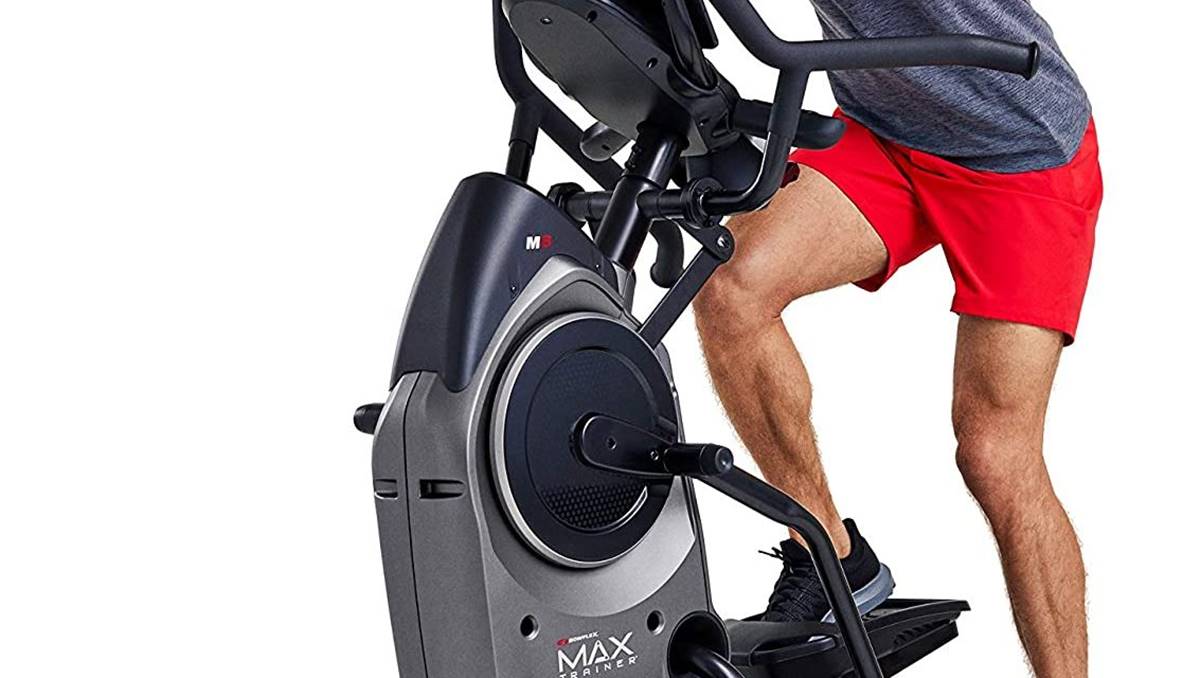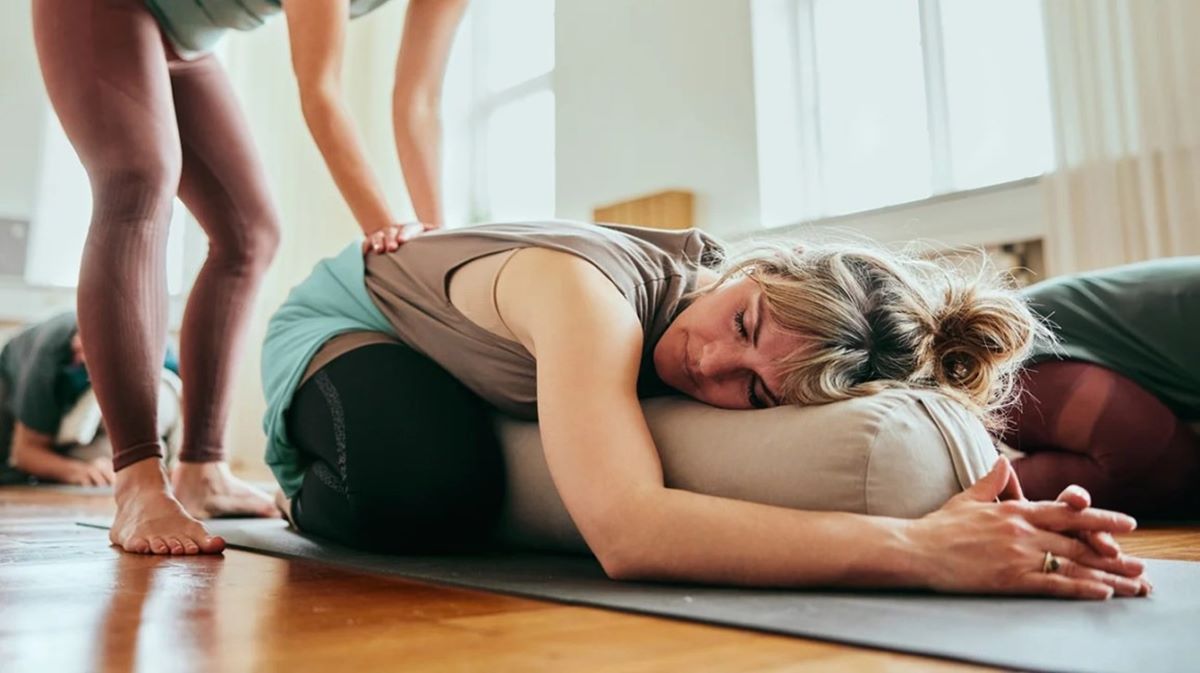

Featured
Best Exercise When On Period
Modified: January 2, 2024
Discover the best exercises to do when you're on your period, featured for their effectiveness in relieving menstrual cramps and boosting mood.
Introduction
For many women, getting their period is accompanied by a range of uncomfortable symptoms, including cramps, bloating, and fatigue. It’s a time when curling up in bed with a hot water bottle and a good book sounds much more appealing than hitting the gym. However, you may be surprised to learn that exercising during your period can actually help alleviate some of these discomforts and improve your overall well-being.
While it’s perfectly normal to have reservations about working out during your period, studies have shown that physical activity can have numerous benefits during this time of the month. From reducing menstrual cramps to boosting your mood and energy levels, the right kind of exercise can make a significant difference in how you feel.
In this article, we will explore the benefits of exercising during your period and highlight the best exercises to do when you’re on your period. Whether you prefer gentle yoga poses, low-impact cardio, or strength training, there’s an exercise routine that can help you feel your best even during your period.
It’s important to note that everyone’s experience with their period is different, and what works for one person may not work for another. It’s essential to listen to your body and modify or adjust your exercise routine as needed. If you have any concerns or underlying health conditions, it’s always best to consult with your healthcare provider before starting a new exercise regimen.
Common feelings during your period
Menstruation, also known as your period, is a natural part of the menstrual cycle that most women experience on a monthly basis. During this time, the lining of the uterus sheds, resulting in vaginal bleeding. Along with the physical changes happening in your body, you may also experience a range of emotional and physical symptoms that can vary from person to person.
One of the most common symptoms experienced during your period is menstrual cramps, also known as dysmenorrhea. These cramps are caused by contractions in the uterus as it sheds its lining. They can range from mild to severe and may be accompanied by lower back pain.
Bloating is another common complaint during your period. The body retains water, leading to a feeling of fullness and discomfort. This can make you feel heavier and less motivated to engage in physical activity.
Many women also experience fatigue and low energy levels during their period. Hormonal fluctuations, combined with the physical toll of menstruation, can leave you feeling tired and drained. This lack of energy can make it challenging to find the motivation to exercise during this time.
In addition to physical symptoms, some women may also experience mood swings, irritability, and heightened emotions during their period. This is due to fluctuating levels of hormones such as estrogen and progesterone, which can impact neurotransmitters in the brain.
Overall, the combination of these physical and emotional symptoms can make it challenging to maintain your regular exercise routine during your period. However, it’s important to remember that staying active can actually help alleviate some of these discomforts and improve your overall well-being.
Benefits of exercising during your period
While it may be tempting to skip the gym or take a break from your regular exercise routine during your period, staying physically active can actually provide a range of benefits for your body and mind. Here are some reasons why exercising during your period is beneficial:
1. Alleviates menstrual cramps: Engaging in physical activity can help reduce the intensity and duration of menstrual cramps. Exercise helps increase blood circulation, which can alleviate the muscle contractions that cause cramping. Additionally, endorphins released during exercise act as natural painkillers, providing relief from discomfort.
2. Boosts mood and reduces PMS symptoms: Hormonal fluctuations during your period can lead to mood swings and irritability. Exercise releases endorphins, which are known as “feel-good” hormones, improving your mood and reducing irritability. Regular exercise also helps reduce PMS symptoms such as bloating and breast tenderness.
3. Increases energy levels: Although fatigue is a common symptom during your period, engaging in light to moderate exercise can actually boost your energy levels. Exercise improves blood circulation and increases oxygen flow to the muscles, providing a natural energy boost and reducing feelings of fatigue.
4. Manages weight and bloating: Physical activity can help manage weight fluctuations and reduce bloating during your period. Exercise increases metabolism, helping to burn calories and prevent weight gain. Additionally, it aids in reducing water retention, minimizing the feeling of bloating.
5. Improves sleep quality: Regular exercise during your period can improve sleep quality. Engaging in physical activity helps regulate hormone levels and promotes a deeper, more restful sleep. A good night’s sleep can contribute to overall well-being and help reduce feelings of fatigue and sluggishness.
6. Enhances overall well-being: Exercise has the ability to boost endorphin levels, improve self-confidence, and reduce stress and anxiety. By incorporating exercise into your routine during your period, you can experience an overall sense of well-being and increased resilience to hormonal fluctuations.
Remember, every person’s experience with their period is unique, and these benefits may vary from individual to individual. It’s important to listen to your body and choose exercises that feel comfortable and enjoyable for you.
Best exercises for period cramps
Dealing with period cramps can be a challenge, but there are exercises that can help alleviate the discomfort and reduce the intensity of the cramps. Here are some of the best exercises for period cramps:
1. Gentle yoga: Yoga is known for its calming and soothing effects. Practicing gentle yoga poses, such as Child’s Pose, Cat-Cow, and Supine Twist, can help relieve tension in the lower abdomen and promote relaxation. These poses gently stretch and release the muscles, reducing cramping and promoting blood circulation in the pelvic area.
2. Walking: A low-impact exercise like walking can be beneficial for period cramps. Taking a brisk walk helps increase blood flow throughout the body, including the pelvic region, which can help reduce cramping. It also releases endorphins, which act as natural painkillers and improve mood.
3. Pilates: Pilates exercises focus on strengthening the core and improving flexibility. Gentle Pilates movements can alleviate period cramps by enhancing blood flow to the abdominal area, reducing tension, and promoting better muscle balance. Exercises like pelvic curls, leg circles, and pelvic tilts are particularly helpful.
4. Swimming: If you enjoy water-based activities, swimming can be an excellent choice for relieving period cramps. The buoyancy of water reduces the pressure on your joints and muscles, providing gentle resistance and promoting relaxation. Swimming also helps increase blood circulation, aiding in the reduction of cramping.
5. Cardio workouts: Engaging in low-impact cardiovascular exercises such as cycling or using an elliptical machine can help reduce period cramps. These exercises increase blood circulation and release endorphins, which can provide relief from cramping. It’s important to listen to your body and choose a pace and intensity that feels comfortable for you.
6. Stretching exercises: Incorporate gentle stretches into your routine to alleviate tight muscles and reduce cramping. Focus on stretching the muscles of the lower back, hips, and abdomen. Simple stretches like the Cobra pose, Seated forward bend, and Butterfly stretch can provide relief and improve flexibility in the pelvic area.
It’s important to remember that not all exercises work the same for everyone. You may need to experiment with different types of exercises to find what works best for your body and provides you with the most relief from period cramps. Always listen to your body and stop any exercise that causes pain or discomfort.
Yoga poses for menstrual discomfort
Yoga is a gentle and effective way to alleviate menstrual discomfort and promote relaxation during your period. Certain yoga poses can help relieve cramps, reduce bloating, and release tension in the pelvic area. Here are some yoga poses that can provide relief for menstrual discomfort:
1. Child’s Pose (Balasana): Start by kneeling on the floor, sitting your buttocks on your heels. Bend forward, bringing your forehead to rest on the floor and your arms stretched in front of you. This pose gently stretches the lower back and massages the abdominal organs, helping to relieve cramps and reduce bloating.
2. Cat-Cow Pose (Marjaryasana-Bitilasana): Start on your hands and knees, with your wrists directly under your shoulders and your knees under your hips. Inhale, arch your back, and lift your chest and tailbone upwards. Exhale, round your spine, tuck your chin towards your chest, and tuck your tailbone under. This dynamic pose helps to stretch the spine and massage the abdominal organs, providing relief from cramps and promoting circulation.
3. Supine Twist (Supta Matsyendrasana): Lie on your back with your knees bent and feet flat on the floor. Extend your arms out to the sides at shoulder height. Exhale and gently lower both knees to one side, keeping your shoulders on the floor. Hold the pose for a few breaths, then switch sides. This twist helps to release tension in the lower back and massages the abdominal area, relieving cramps and promoting relaxation.
4. Legs-Up-The-Wall Pose (Viparita Karani): Sit sideways next to a wall and gently swing your legs up against the wall while lying on your back. Your buttocks should be as close to the wall as possible. Rest your arms by your sides and close your eyes. This restorative pose promotes relaxation, encourages blood flow towards the pelvic area, and reduces any swelling or discomfort in the legs and lower back.
5. Bridge Pose (Setu Bandha Sarvangasana): Lie on your back with your knees bent and your feet flat on the floor, hip-distance apart. Press your feet firmly into the ground, engage your glutes, and lift your hips off the ground. Clasp your hands underneath your buttocks and press your shoulders into the mat. Hold the pose for a few breaths. This pose helps to relieve menstrual cramps, stretch the abdominal area, and improve blood circulation.
6. Butterfly Pose (Badha Konasana): Sit on the floor with your legs extended in front of you. Bend your knees and bring the soles of your feet together, allowing your knees to drop open. Gently hold onto your feet or ankles and sit up tall. This pose helps to stretch the groin area, relieve tension in the lower back, and reduce menstrual discomfort.
These yoga poses can be done individually or as part of a gentle flow sequence. Remember to listen to your body’s needs and modify or adjust the poses if necessary. If any pose causes pain or discomfort, it’s important to stop and seek guidance from a trained yoga instructor.
Low-impact cardio exercises for period days
Engaging in cardio exercises during your period can boost your mood, increase energy levels, and improve blood circulation. However, it’s important to choose low-impact activities that are gentle on your body and minimize any discomfort. Here are some low-impact cardio exercises that are perfect for your period days:
1. Brisk walking: Taking a brisk walk is an excellent low-impact exercise that can be easily incorporated into your daily routine. It improves blood circulation, increases heart rate, and helps relieve menstrual cramps. Grab a pair of comfortable walking shoes and head outside for a refreshing and energizing walk.
2. Stationary biking: Cycling on a stationary bike is a low-impact cardio exercise that provides a good workout without putting strain on your joints. Adjust the resistance level to a comfortable intensity, and pedal at a steady pace. It’s a great way to increase your heart rate, improve cardiovascular fitness, and reduce period cramps.
3. Swimming or water aerobics: Water-based exercises are ideal for period days, as they provide resistance and support while being easy on the joints. Swimming or participating in a water aerobics class can help boost circulation, strengthen muscles, and alleviate period cramps. The buoyancy of the water also provides a cooling and soothing effect.
4. Dancing: Dancing is a fun and enjoyable low-impact cardio exercise that allows you to move your body and increase your heart rate. Whether it’s dancing around your living room, taking a Zumba class, or following a dance workout video, dancing can help improve mood, reduce PMS symptoms, and provide a great cardiovascular workout.
5. Elliptical training: Using an elliptical machine provides a low-impact workout that is gentle on the joints while still getting your heart rate up. This exercise mimics the movements of walking, jogging, and stair climbing, giving you a full-body workout without putting excessive strain on your knees or hips. Adjust the resistance and duration based on your comfort level.
6. Low-impact aerobics: Participating in a low-impact aerobics class or following along with a low-impact workout video can be a great way to get moving during your period. These exercises typically involve controlled movements and incorporate elements of cardio, strength, and flexibility. Low-impact aerobics can help improve cardiovascular fitness, boost mood, and alleviate period cramps.
Remember to listen to your body and take breaks or modify the intensity of the exercises as needed. It’s important to choose activities that you enjoy and that feel comfortable for you during your period. Prioritize your well-being and choose exercises that make you feel good both physically and mentally.
Strength training exercises for your period
Strength training exercises are not only beneficial for building muscle and improving overall strength, but they can also be done during your period to help alleviate discomfort and boost your energy levels. Incorporating some strength training exercises into your routine can provide several benefits during this time. Here are some strength training exercises that are perfect for your period:
1. Squats: Squats are an effective compound exercise that targets multiple muscle groups, including the quadriceps, hamstrings, glutes, and core. They help improve lower body strength and stability. Start with your feet hip-width apart, lower your body down as if sitting back into a chair, and then press through your heels to stand back up. You can perform bodyweight squats or add dumbbells or a barbell for an extra challenge.
2. Lunges: Lunges are another great lower body exercise that targets the quads, hamstrings, glutes, and hips. Start by stepping forward with one leg, lowering your body until both knees are bent at a 90-degree angle, and then push back up to the starting position. Lunges can be done with bodyweight or by holding dumbbells for added resistance.
3. Deadlifts: Deadlifts primarily target the hamstrings, glutes, and lower back. Start with your feet hip-width apart, holding a barbell with an overhand grip. Hinge forward at the hips while maintaining a flat back, lower the barbell down towards your shins, and then engage your glutes to lift the weight back up. Deadlifts can also be done with dumbbells or kettlebells if you prefer.
4. Push-ups: Push-ups are a classic upper body exercise that targets the chest, shoulders, triceps, and core. Start in a high plank position with your hands slightly wider than shoulder-width apart. Lower your body down by bending your elbows, keeping your core engaged, and then push back up to the starting position. Modify the exercise by performing push-ups on your knees or against a wall if needed.
5. Plank: Planks are a great exercise for strengthening the core muscles, including the abdominals, obliques, and lower back. Start by balancing on your forearms and toes, keeping your body in a straight line from head to heels, and holding the position for as long as you can. You can also modify this exercise by performing the plank on your knees instead of your toes.
6. Resistance band exercises: Using resistance bands can be an effective way to incorporate strength training during your period. Resistance bands provide resistance throughout the range of motion, helping to strengthen and tone various muscle groups. They can be used for exercises like bicep curls, lateral raises, and glute bridges.
When performing strength training exercises during your period, be sure to listen to your body and modify the exercises as needed. Be mindful of any discomfort or fatigue and adjust the intensity or weights accordingly. Strength training can help improve your mood, boost your energy levels, and provide a sense of accomplishment during your period.
Things to consider while exercising on your period
Exercising during your period can have numerous benefits for your physical and mental well-being. However, it’s important to listen to your body and make a few considerations to ensure a safe and comfortable workout. Here are some things to keep in mind while exercising on your period:
1. Hydration: Staying hydrated is crucial during your period, especially when engaging in physical activity. Make sure to drink plenty of water before, during, and after your workout to prevent dehydration and to support overall bodily functions.
2. Comfortable clothing: Wear comfortable and breathable clothing during your workout. Opt for moisture-wicking fabrics that help keep you dry. Choose fitted or supportive undergarments to provide extra comfort and stability during movements.
3. Proper nutrition: Fuel your body with nutritious foods, including a balanced combination of carbohydrates, protein, and healthy fats. Incorporate foods rich in iron, such as leafy greens and lean meats, to replenish any lost nutrients during menstruation.
4. Listen to your body: Pay attention to how your body feels during exercise. While it’s normal to experience some discomfort, be mindful of any excessive pain, dizziness, or fatigue. Modify or avoid certain exercises if they cause discomfort or exacerbate your symptoms.
5. Take breaks when needed: Allow yourself to take breaks and rest when necessary. Listen to your body’s signals and pace yourself accordingly. Don’t push yourself too hard if you’re feeling low on energy or experiencing increased fatigue.
6. Modify your workouts: Adjust your exercise routine to suit your needs and comfort level during your period. If high-intensity workouts feel too challenging or uncomfortable, opt for low-impact exercises or focus on stretching and gentle movements. Yoga or Pilates can be excellent options to support your body during this time.
7. Be prepared: Carry extra pads, tampons, or menstrual cups with you when exercising, especially if you have heavy flow. Consider wearing dark-colored or moisture-wicking activewear to help minimize any potential leaks or stains.
8. Practice good hygiene: Maintain good hygiene by changing your sanitary products before and after your workout. Shower and clean your body thoroughly to prevent any potential infections.
9. Rest and recovery: Allow yourself time to rest and recover. Ensure you get enough sleep during your period to support your body’s natural healing processes and to help alleviate fatigue and discomfort.
Remember, these considerations are general guidelines, and it’s important to listen to your body’s unique needs. If you have any concerns or underlying health conditions, consult with your healthcare provider for personalized advice on exercising during your period.
Conclusion
Exercising during your period may seem like a daunting task, but it can actually provide numerous benefits for both your physical and mental health. From reducing period cramps to boosting mood and energy levels, the right kind of exercise can make a significant difference in how you feel during this time of the month.
By incorporating various types of exercises, such as gentle yoga, low-impact cardio, and strength training, you can find the right balance that suits your needs and comfort level. These exercises can help alleviate discomfort, improve blood circulation, reduce bloating, and enhance overall well-being during your period.
However, it’s crucial to listen to your body and make adjustments as needed. Modify the intensity and duration of workouts, choose comfortable clothing, and prioritize hydration and nutrition. Remember to take breaks when necessary and practice good hygiene to ensure a safe and comfortable exercising experience.
It’s important to note that every person’s experience with their period is unique, and what works for one person may not work for another. It’s essential to honor your body’s needs and make choices that align with your personal comfort and health. If you have any concerns or underlying health conditions, consider consulting with your healthcare provider for individualized advice.
So, rather than using your period as an excuse to skip workouts, consider it as an opportunity to explore different exercises and find what works best for you. By staying active during your period, you can improve your overall well-being and make the most out of this natural and necessary phase of your menstrual cycle.
